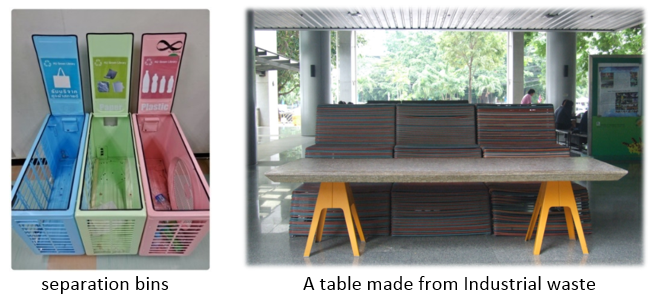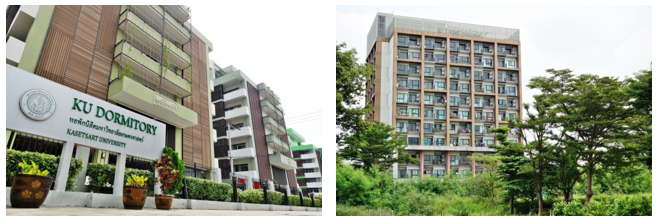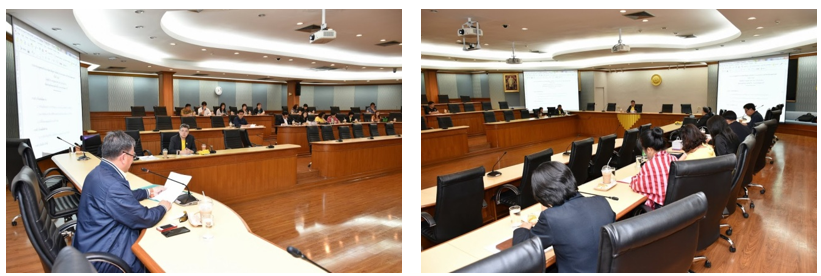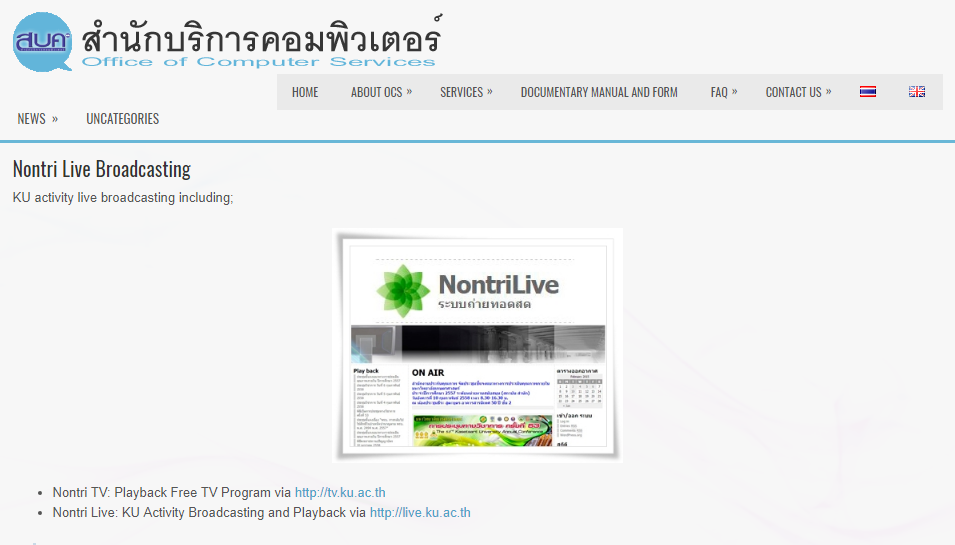[2.10] Greenhouse gas emission reduction program
Indicator 1 Direct purpose of reduction of greenhouse gas emission
1.1 A policy on electrical vehicle shuttle service instead of diesel combustion engine vehicle in order to reduce greenhouse gas emission

1.2 Promote the use of zero greenhouse gas emission vehicle

1.3 Non-CFC air conditioner’s refrigerant usage
Maintenance of air conditioner for reduction of greenhouse gas emission and energy saving. There are steps of air conditioner checking as follows: air conditioner’s refrigerant checking, high and low pressure checking and keeps the pressures in the standard level, and measure for electrical power consumption of air conditioners by checking of electrical current of compressor.

Figure Cleaning air conditioner to reduce energy consumption
Using of R-123 or HCFC-123 refrigerant
The R-123 or HCFC-123 refrigerant is a kind of Hydrochlorofluorocarbon (HCFC). It is low ozone depletion potential (ODP). R-123 has 0.012 or 1.2% ODP of R-11(CFC-11). It means that R-123 has lowest rate of ODP out of all HCFC. (Fig. 1- and 2)

Figure 1 Non-CFC refrigerant, HCFC – 123 liquid refrigerant

Figure 2 Cooling system which save more water
Indicator 2 Indirect purpose of reduction of energy emission
2.1 Explicit policy on energy management
The use of efficient energy saving appliances replacing conventional appliances (Figure 1)

Figure 1 Proactive policy of approach on Green University
2.2 Campaign on energy saving for reducing of electricity consumption

Figure 2 Sticker campaign on switch off the light when not in use, It is electrical energy- saving and reduce greenhouse gas emission.
2.3 Encouragement on renewable energy consumption
Biogas production station
Biogas production station of Kasetsart University produced gas from food waste 400 kg. /day and converted into heat energy from a gas tank of 15 cubic meters to use in the canteen.

Usage of wind power

Solar Cell Panels 9 Kilowatts.

Indicator 3 Other indirect purpose of reduction of greenhouse gas emission from all activities of the University
3.1 Various form of waste management such as recycle and fertilizer production
Kasetsart University has organized activities or projects to change a habit of carelessly consume materials or resources. The purposes of the activities or projects are to reduce energy consumption and create environmental friendly behavior of student and staff. These activities will be least cost or free of charge. In addition, Kasetsart University has also pushed ‘the Zero Waste Society’ program to reuse waste or leftover material by these following policies:
Avoid: avoid using of material which difficult to eliminate.
Reduce: reduce purchasing or using material which cause waste.
Reuse: bring back used material or thing to be used again.
Recycle: processing or transformed leftover material and use again.

3.2 Water purchasing reduction such as self-production of tap water and campaign on water saving
Kasetsart University has a policy to organize activities or projects to conserve energy, water use in the workplace, public relations within department and through the website

3.3 Adequate nearby accommodation for student and staff in order to reduce commuting

3.4 Reduction of air travel by teleconference between the 4 campuses


